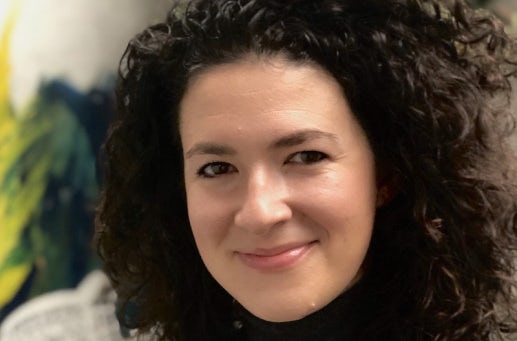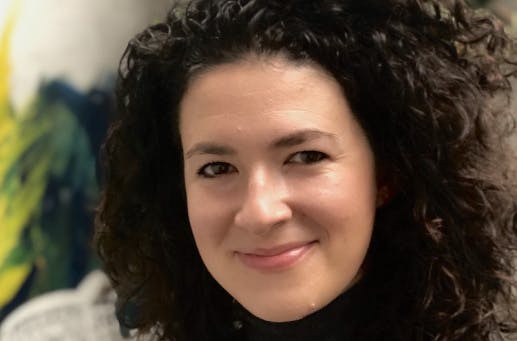Hannah Herlihy-Lowe is the Head of Customer Success at ecommerce and marketing data specialists, Conjura. We caught up with Hannah to find out more about her role and typical day.

Please describe your job: What do you do?
As head of customer success, there’s two main parts to my job. The first is a client liaison role, making sure everyone is getting everything they need from our data platform. That involves dealing with our product and engineering teams for anything that’s technical as well as overseeing our customer success teams.
The second part is providing consultancy to our clients, discussing growth and performance goals and ensuring that Conjura supports these goals from a marketing and operations perspective. We have worked with so many fast-growing businesses that we know what works and what doesn’t and we can get right down into the detail.
For example, a client might want to become less reliant on paid channels and turn instead to generating a community-focused customer base. We can advise on how to do these things, together with how to personalise the customer journey, how to build retention, how often to review customer segmentation etc. To summarise, we harness our knowledge and insight to act as a strategic growth partner to our clients.
I did a BEng in mechanical engineering and then a masters in analytics in Dublin. I can truly say that my role draws upon all of this knowledge as well as the business insight I developed in a former role at Accenture in Ireland where I met Conjura co-founder and CEO, Fran Quilty.
How has customer behaviour changed during the pandemic?
After lockdown, we took the opportunity to look at the data across our client base and found that paid search marketing spend went up by 50% from May. By the end of the summer we also saw that paid social marketing budgets were running at 15% higher than the same time last year and the businesses that increased their social marketing budgets during lockdown saw revenues more than double.
When it comes to the shoppers themselves, because we have sight of so much customer data across all our client businesses and across industries, we were in a great position to observe some really interesting behaviour shifts.
In the beauty industry, for example, we saw a trend towards in-home care, and an upswing in the purchase of items such as nourishing, pampering facemasks and deep cleansing products. With salons closed and people stuck at home, there was a real desire to experiment with that product category. We also saw that consumers who tried a beauty brand for the first time during lockdown were more likely to go on to buy from that brand again than pre pandemic.
In fashion, we saw the level of returns fall away and we put this down to the huge growth in leisure and loungewear as people shopped for items that they could be comfortable in at home. The sizing for such items is much more relaxed and forgiving, hence the lower number of returns.
Another client of ours, Modern Milkman saw an incredible influx of new clients as everyone wanted essential items delivered to their homes.
Another trend during the pandemic was the boom in online resellers who acquired stock when non-essential retail closed down and managed to make good money selling these items online, especially in the beauty and fashion sectors.
Talk us through a typical day…
Every day starts off with a strong coffee. I make an attempt at a home-brewed flat white using beans from an amazing roastery from back home in Dublin. It’s one of my little luxuries.
A post pandemic day in the office is very different to a pre-pandemic one. Like everyone else, it’s lots of calls and staring at screens. I do make an effort though to break up the rhythm. I mix formal client calls with informal catch ups with our various teams – analysts, sales and engineering.
It’s really important to check in to see how everyone is feeling as we’re living through such weird times. I always make a point of doing this before we get onto work stuff – mental health is just not something we can take for granted. They say around 93% of communication is non-verbal in nature so it’s so much harder to pick up on how everyone is feeling when you’re all on screens; that’s why I don’t just allude to wellbeing, I ask people outright how they’re doing.
My morning is usually spent on client liaison, sorting out any issues that might have occurred overnight or dealing with requests around specific data that our clients need access to on our platform.
Then it’s usually lunchtime and wherever I’m working I make a point of getting out for some fresh air to keep me sane. It’s also another chance to fill up on more coffee, this time from a coffee shop. I’m one of those people trying to keep our city centre outlets going!
In the afternoon I connect with our sales team, helping them to onboard new customers and supporting them in driving new opportunities. Then I might take a few calls with our engineering team who are the heart of our product development – a key project for us at the moment is building more machine learning models into our offer. I’m an important conduit between our clients and our engineers; it’s vital to ensure the client feedback I get makes its way to the people who build our platform. I keep my ear to the ground, constantly assessing what our engineering and product teams need to know to help us grow the Conjura business.
How do you maintain an effective work/life balance?
Pre pandemic I would meet up with friends and family, but like everyone, this has been curtailed. I am a people person at heart so try to make sure that where possible I keep this up, even if it is over Zoom. Besides the cycling to work, I try to go for regular runs and to spend as much time outdoors as I can.
Having my daughter also helps because she loves to get out and about on adventures, whatever the weather. I have learnt to take things at her pace, seeing the world through her eyes, it puts life in perspective! We have now become experts in our local playgrounds and babyccinos!
We love walks along London’s canal network. Having grown up in Dublin, I miss the sea and I miss the wide-open space. To compensate, you’ll find my daughter and I pretty much jumping in any puddle of water we can find!
How has strategy changed at your company?
We’ve been incredibly fortunate in that the pandemic absolutely turbo-charged our growth. Because our client base consists mainly of ecommerce businesses, demand for our services went through the roof. Those brands and retailers that didn’t have an online sales channel had to make it happen fast. We helped them get a handle on their transactional data so that they could act on that data to drive growth, ensuring their marketing strategies and understanding of customers was where it needed to be. There’s a huge amount of education and consultancy that supports our platform, so we have been very busy.
Because we are on such a fast growth trajectory, we now review our growth every three to four weeks and have become much more target-orientated.
What do you predict for the future?
Consumers are becoming more knowledgeable about how their data is used across social platforms. I think they are savvy enough to no longer be turned off by this, but to work things to their own benefit. They also understand that it’s really hard to live in today’s world without providing some level of data. And while they don’t necessarily like tailored ads I think we will see a growing awareness of how they make for a better shopping experience online as ecommerce businesses get better at personalisation. The ecommerce industry might not be where firms like Netflix, Amazon and Spotify are on the personalisation front, but I think you’ll see it making good progress in the near future.
Businesses are starting to get much better at linking their various data sources, connecting marketing activity to inventory and what they know about customers, from sizing to repeat purchase trends, to average spend, so that they get a better ROI on their advertising budgets and drive activity to meet their strategic goals.
I also think we will see more regulation coming into force, something which will deliver a positive outcome for everyone. An intense period of innovation, which is where we are now, is often followed by formal regulation. I believe it will be consumer-centric and designed to protect the most vulnerable consumers.
What advice would you give a marketer right now?
Covid has driven an incredible acceleration to online and this means that CMOs need to get a grip on data like never before. That’s fine for native DTC and online brand CMOs, but for CMOs at more traditional brands and retailers, there’s a massive knowledge gap to be filled. We all know the CMO skillset has been changing fast in recent years, but the last few months have turbocharged things.
And that lack of knowledge will actually impede the CMO’s ability to drive growth within the business. In the job that I do, you can literally tell the calibre of the C Suite simply by looking at the data, and without talking to anyone in the business. And the ability to gather, analyse and act on data is not related to company size; the biggest businesses can do a bad job of it, while smaller scale ups do a great job. The industry that does it best by a mile is betting.
So my advice to a CMO is to educate yourself around data and don’t get dazzled by the vast array of products on the market. A CMO looking for fast solutions in a space where they have limited experience can easily be seduced by black boxes and complex attribution models. Equally they can make huge errors when organising for the inhouse data resource that’s now required to deal with new requirements around data.
Data and analytics trends in 2021: How will strategy evolve in the wake of Covid-19?




